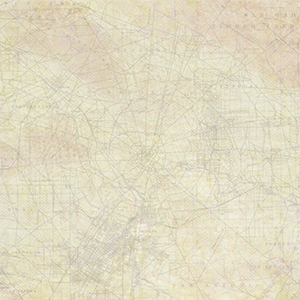 A collaborative project between guitarist/composer Michael Pisaro-Lu and Zizia (the duo of Amber Wolfe Rounds and Jarrod Fowler), Pisaura has debuted with quite a complex album, both conceptually and compositionally. Constructed from field recordings and found sounds and composition strategies guided by astrological maps, it is a dense and intricate work from a conceptual standpoint, but also a fascinating one that has secrets that are never fully revealed.
A collaborative project between guitarist/composer Michael Pisaro-Lu and Zizia (the duo of Amber Wolfe Rounds and Jarrod Fowler), Pisaura has debuted with quite a complex album, both conceptually and compositionally. Constructed from field recordings and found sounds and composition strategies guided by astrological maps, it is a dense and intricate work from a conceptual standpoint, but also a fascinating one that has secrets that are never fully revealed.
I first listened to Asteraceae intentionally avoiding any specific information regarding its construction, because beyond the cover art and packaging of an album, I like to focus on just the audio elements at first.For all its conceptual depth, the sleeve of the disc is kept rather minimal:a detail of the hybrid celestial/geographical map that Pisaura created for the project with a tiny bit of the written score hidden in the art. A full explanation of the work, as well as the extensive list of audio sources, can be found at http://zizia.xyz/aster.html.
There are a lot of traditional and electronic instruments used by the trio throughout the album, but the most overt element would be field recordings.For example, there is a melodica passage that appears heavily processed (but perceptible) throughout opening piece "ht01 °41 suruaT norihC," but the primary focus is on a multitude of quiet, hushed elemental sounds, including insects and other organisms.Sampled spider recordings (from the publicly accessible Ohio University's Borror Lab of Bioacoustics) also appear frequently throughout the entirety of the album, which is fitting given that Pisaura is a species of spider and also likely the first time I have specifically heard an arachnid featured on a CD.
The trio’s restrained and heavily processed use of other instruments is also a fascinating element of Asteraceae.Treated guitar is restructured into shimmering bell-like melodies throughout "Sun Sagittarius 3° 5th" that is fleshed out with plant percussion and other less specific field recordings.For other pieces, like "Mars Aquarius 9° 7th," the focus is on layers of combined guitar performances, resulting in a pleasant churn that is more of a traditional, though well executed, take on darker ambient sounds.Drawn from the same sources, "Saturn Sagittarius 18° 5th" is a beautiful suite of expansive tones, enriched by some subtle field recordings of water.
The bulk of this disc showcases the less conventional sound sources, however.There are some digital interference sounds and drifting electronics for "ht5 °81 suirattigaS nrutaS" but beyond that it is a series of water and other nature recordings primarily, none of which are too obvious.The back-to-back sequenced short pieces, "Pluto Libra 17° 4th" and "ht5 °51 suirattigaS nrutaS" work perfectly in their contrast with one another.The former sounds to be a far off metallic clatter of indistinct origin, while the latter is a warm, organic piece that feels far more inviting than the chaotic work that preceded it."st1 °92 recnaC tnadnecsA" fits with the organic theme as well:opening with a wet, wobbling crunch that quickly subsides, there is a strangely natural tinge to the electronics and droning tones that pervade.
Interestingly enough, considering its highly structured and deliberately composed nature, Pisaura has also intended this disc to be played fully on shuffle mode.Which explains the multitude of shorter pieces that appear throughout the middle portion of the disc, with the more dense compositions bookending the album.Much like Gescom's MiniDisc release, the juxtaposition of a slew of short, sparse works presented in varying contexts give an added level of unpredictability to the album.With the sounds being sometimes consistent, sometimes disparate, having them sequenced in an unexpected way adds a new layer to the disc.
Being one of the most conceptually deep albums I have heard in a while, Asteraceae sounds as if it could be a daunting experience, but it is anything but.First listening to it as I would any other album, and then going back again following the "guide" that is posted online, it added to my appreciation for what I was hearing, as well as answered some questions I had regarding sound sources and the like.However, there remains a significant amount of mystery and ambiguity, which is exactly the sort of thing I want to hear on this type of record.
Read More

